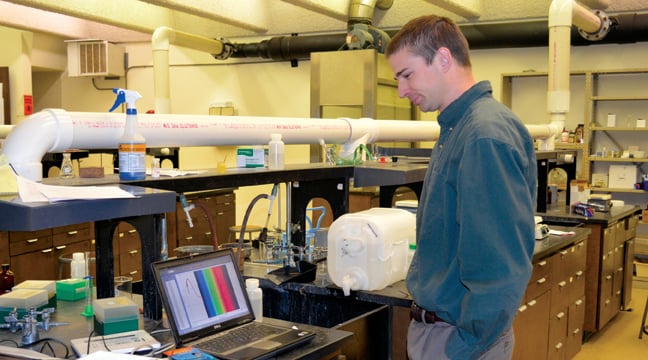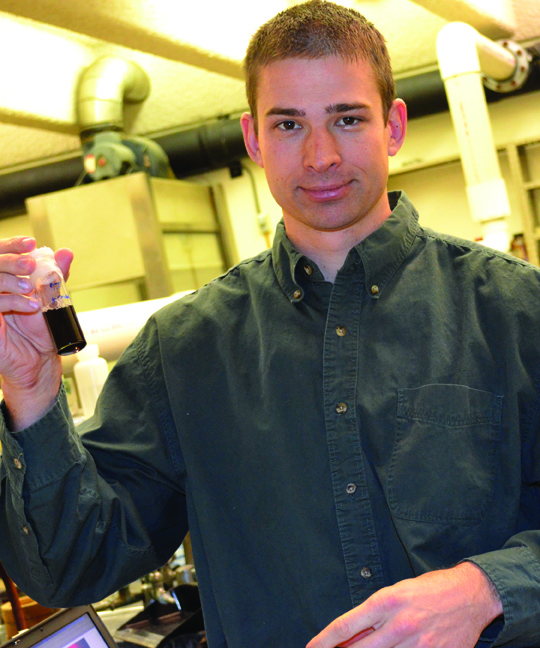
Nanotechnology comes to Newman University
 By Ryan Huschka, Ph.D. ’07
By Ryan Huschka, Ph.D. ’07
Assistant Professor of Chemistry
Over the past decade, nanotechnology has been the “buzzword” in basic, applied, and medical research. Even if you have heard about nanotechnology in the news, you may still ask yourself, “What is nanotechnology?”
The National Nanotechnology Initiative funded by the National Science Foundation defines nanotechnology as the manipulation of materials, structures, and devices with at least one dimension sized from 1 to 100 nanometers. So, how small is a nanometer? The prefix “nano” in nanometer is one-billionth the distance of a meter.
This is almost too small to comprehend, so a common analogy I use is the following: The size of a nanoparticle to the size of a soccer ball is comparable to the size of a soccer ball to the size of the Earth. Wow, that is small!!
The applications of nanotechnology are broad and cover many disciplines of research including materials, medical and electronic devices, biomaterials, and solar energy, just to name a few. Hundreds of clinical trials involving nanotechnology therapies are underway including treatments for cancer and Alzheimer’s. In fact, products that use nanotechnology are already on the market. For example, sunscreen contains titanium dioxide nanoparticles because they are transparent when applied to the skin and absorb the sun’s harmful ultraviolet rays. Nanotechnology has resulted in water/stain resistant upholstery and clothing, such as “nanopants” (cleverly named). Silver nanoparticles are added to socks because they kill bacteria and eliminate unwanted odors.
 After graduating from Newman University in 2007, I pursued nanotechnology research in my graduate studies in chemistry at Rice University under the supervision of Dr. Naomi J. Halas, a leader in nanotechnology research. During those five years, I synthesized gold nanostructures that varied with shape and size, and used these nanoparticles for a variety of biomedical applications, including drug delivery and light-triggered biocatalysis.
After graduating from Newman University in 2007, I pursued nanotechnology research in my graduate studies in chemistry at Rice University under the supervision of Dr. Naomi J. Halas, a leader in nanotechnology research. During those five years, I synthesized gold nanostructures that varied with shape and size, and used these nanoparticles for a variety of biomedical applications, including drug delivery and light-triggered biocatalysis.
Gold nanoparticles have a future in medicine because gold is nontoxic and, due to their “nano” size, hundreds to thousands of nanoparticles can enter into a single living cell. In my research I attached either therapeutic molecules or heat-activated enzymes to the surface of the gold nanoparticles. After the nanoparticles entered the living cells, laser light was directed toward the cells. The nanoparticles absorbed the energy from the light, which resulted in the nanoparticles heating up. The heat would cause either the therapeutic molecule to be released inside the cell or the heat-activated enzyme to begin the biocatalysis reaction. This type of light-triggered therapy was proven to be nontoxic and effective.
I am excited that I get to bring my nanotechnology experience back to Newman University and implement it in the chemistry curriculum. In the years to come, nanotechnology will be present in many disciplines Newman students pursue after graduation, so I believe students need to be exposed to nanotechnology both in the classroom and in the laboratory. I even look forward to leading students in nanotechnology research projects in the years to come.
.
.

